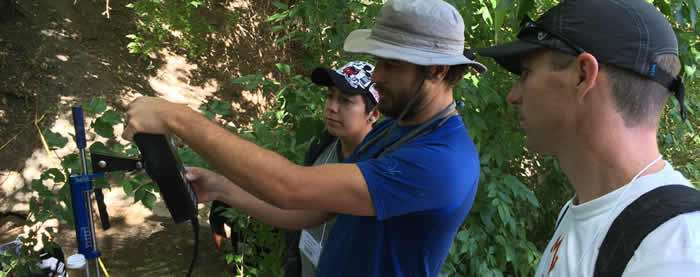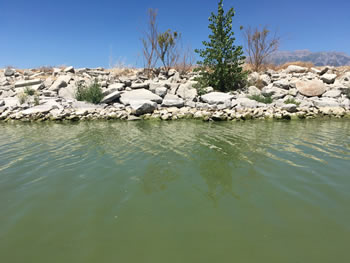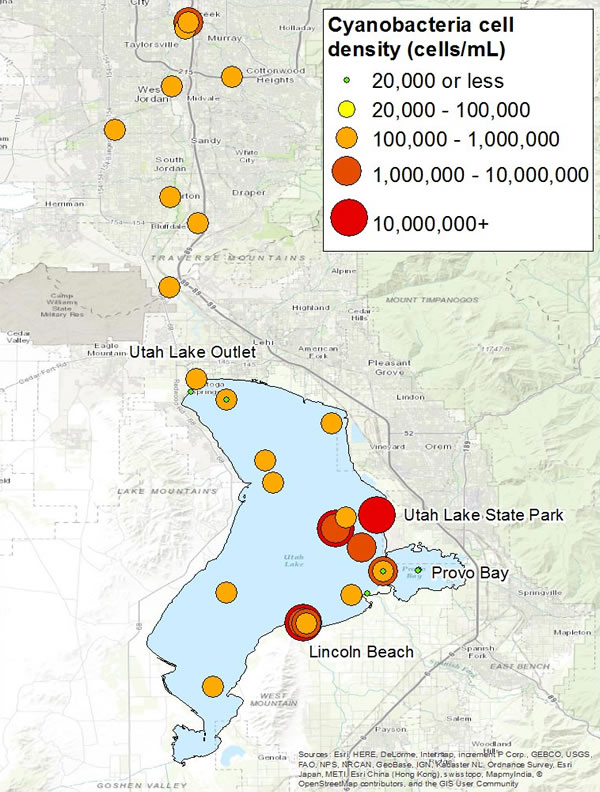News and Highlights
This is a list of past iUTAH EPSCoR news from 2012 to 2018.
August 16, 2016
As a sustainability measure aimed at ensuring your data are available in the long term, all iUTAH datasets are being moved to a larger system called HydroShare for data publication. HydroShare is a new system developed by USU researchers, along with other partners. It includes the functionality of the current iUTAH Data Repository with some additional benefits:
· it supports formal publication of research products, including issuing citable digital object identifiers (DOIs)
· it supports collaborative groups with both public and private sharing of resources
· it supports sharing both data and models
Although there is some work involved in transitioning to HydroShare, the iUTAH Cyberinfrastructure Team is doing as much of this work as possible to ensure that any effort required of collaborators is minimal.
If you have submitted datasets to the iUTAH Data Repository: The iUTAH Cyberinfrastructure Team is handling the transfer of your datasets from the iUTAH Repository to the HydroShare system. In the next few weeks, we will contact you about your datasets. You can create a HydroShare account, and we will transfer ownership of the datasets to you. You can then edit and curate your datasets if needed (especially for those datasets that are currently private) and formally publish them. We will maintain pointers from the iUTAH Repository to HydroShare to redirect any potential users who have the old links.
If you have not yet submitted datasets to the iUTAH Data Repository: You can submit your datasets directly to HydroShare. We are preparing some instructions and a tutorial video for this process. You are welcome to submit datasets without that guidance or wait until the instructions are more complete.
Jeff Horsburgh, Amber Jones, and the iUTAH Cyberinfrastructure Team appreciate the work that many of you have done to add your datasets to the iUTAH Data Repository, and welcome you to contact them directly with questions about the transition.

August 3, 2016
Just Add Water: iUTAH's Summer Institute Engages Students and Teachers

As the fourth and final year of the iUTAH Summer Research Institute came to a close in July 2016, students, teachers, and faculty members reflected on the impact the program has had on them. Among the articles written about the weeklong program, the U’s article said that “A week of hands-on science projects changed the way Jose Galang, a junior at Juan Diego High School in Draper, thought about science. ‘I used to think that scientists were really smart people just doing research and experiments by themselves,’ he said. ‘I never realized there were so many people working together to solve problems.’ ”
Galang was among nine high school students who participated in the National Science Foundation funded-iUTAH summer research institute July 11-15, 2016. The institute brought together high school students, secondary education teachers and undergraduate students to conduct research on water sustainability in Utah under the direction of faculty, postdocs and graduate students from universities across the state.
The group got a firsthand look at what research looks like in several disciplines. On the first day, they recorded observations about the conditions along Emigration Creek and collected water samples. The second day, they learned how to trace the origin of fruits and vegetables by analyzing isotopes in the water content. The third day, they divided into groups across the valley and conducted social science research by surveying people about their access to water. The week culminated in a poster session, where participants presented their work and findings.
‘This program provides a really unique opportunity to bring together students and educators from all along the STEM pipeline,’ said Louisa Stark, director of the iUTAH Summer Research Institute and U professor. ‘There was a lot of peer mentoring going on between the high school students and undergraduates and among the secondary education teachers and the university faculty.’ ”
The article includes comments by other students and Rachel Gabor, iUTAH postdoctoral researcher, and can be read in its entirely below.
Press: UU News | Deseret News | KUSU Radio
August 1, 2016
Bringing Science to the People
What is the best way to help people to understand issues surrounding changing climate and water quality in Utah’s watersheds? If you can’t bring the people to the watershed, the next best way is to bring the watershed to them. That’s what iUTAH has done.
July 26, 2016
Farming Without Soil: U Student's Hydroponics Research Among 18 Projects Showcased
iUTAH iFellows Undergraduate Research program and its participants were featured in a University of Utah news story. As the 11-week program concludes this week, students such as Georgie Corkey reflect on what they have learned.
The U’s article said “For the last 10 weeks, University of Utah student Georgie Corkery has investigated sustainable urban farming options for Salt Lake, and she will present her work at a symposium Wednesday, July 27, at the University of Utah Guest House, 110 S. Fort Douglas Boulevard, 9 a.m.-3 p.m. Corkery is among 18 undergraduate students from universities across the state who were accepted to work as iFellows, a program designed to connect undergraduate students with faculty researchers whose work is part of the National Science Foundation funded-iUTAH project. iUTAH, which stands for innovative urban transitions and arid-region hydro-sustainability, is an interdisciplinary research and training program aimed at strengthening science for Utah’s water future. Part of that involves outreach projects that train the next generation of water scientists.”


July 19, 2016
Sampling Risks in Utah Lake and Tributaries

Many of you may be following the news about the harmful algal bloom on Utah Lake that started last week. Here is a link to the Utah Department of Environmental Quality (DWQ) website which has press releases and other information.
In addition to Utah Lake, harmful algae were found in the Jordan River and lower Little Cottonwood Canyon Creek. We want to caution people about potential risks of sampling in these bodies of water. Cell counts in the 20,000-100,000 are of low to moderate risk, but people should be aware that cell counts on this order of magnitude (or higher) were measured in the Jordan River and its canals over the weekend. Results are not back from sampling today, but apparently the wind shifted and the bloom is moving to the outlet of the lake (i.e. more directly into the Jordan River).
Additionally, if your work brings you into contact with people who live along or near the Jordan and lower Little Cottonwood Canyon Creek, you might warn those individuals to be careful. Not a lot is known about the toxins these algae produce, or how they are transmitted and cycled in the environment.
The Utah’s 2016 Draft Integrated Report describes a rationale for listing Utah Lake as having impaired water quality for harmful algal blooms. The Utah DWQ would appreciate public comment on this document, and the public comment period is open until August 9. Here is the part of the report relevant to Utah Lake.
In closing, please share this information through conversations, email, and social media. We encourage you to respond to the Utah DWQ’s request for comment, or even write letters to local newspapers or op-ed pieces communicating publically on the hazards that this risk poses to humans, animals, birds, and plant life.


July 12, 2016
A Sustainable Education: Integrating Global Thinking Into Classroom Curriculum

with their newly designed curriculum. Credit: KUSU/UPR Radio
iUTAH researcher Ryan Dupont, a professor in civil and environmental engineering and at the Utah Water Research Laboratory at Utah State Unversity was recently featured in the news. He is quoted in the radio story as saying, “You typically don’t think of theater as a focus for sustainability, but in reality those students are involved in the selection of materials to build sets and [they determine] how those sets are constructed. The use of coatings and adhesives have potential significant impacts on the people making the sets and implications in terms of people manufacturing them,” he said.
“What we’re trying to instill in our students is that sustainability is not just a course you check off a list and then move on to other things, but that it incorporates a variety of different concepts that are applicable whether you are taking a natural science course or are involved in the humanities,” said Dupont. "We are trying to incorporate ideas from different disciplinary perspectives, so it becomes part of modern life.”
Read More...


